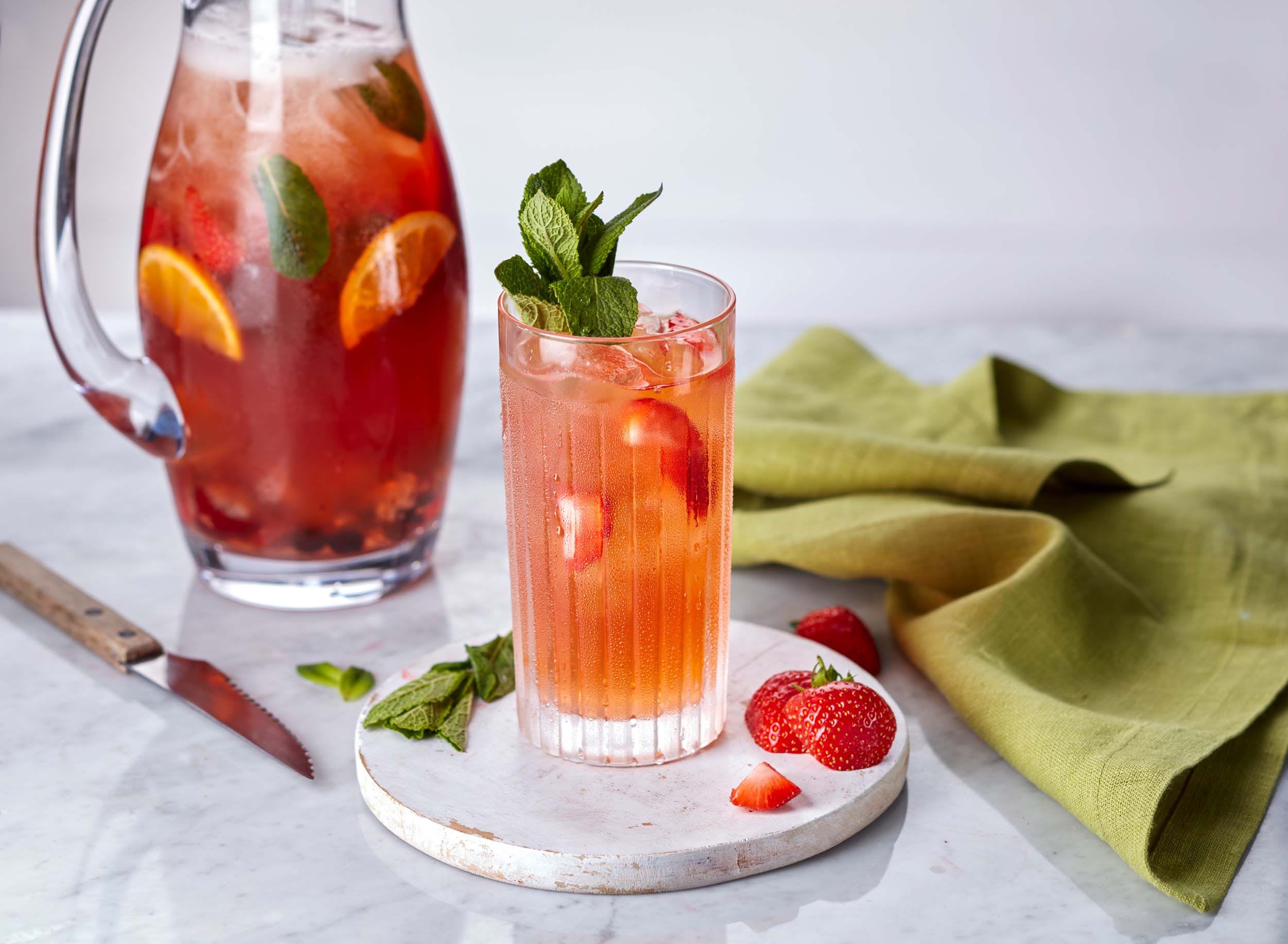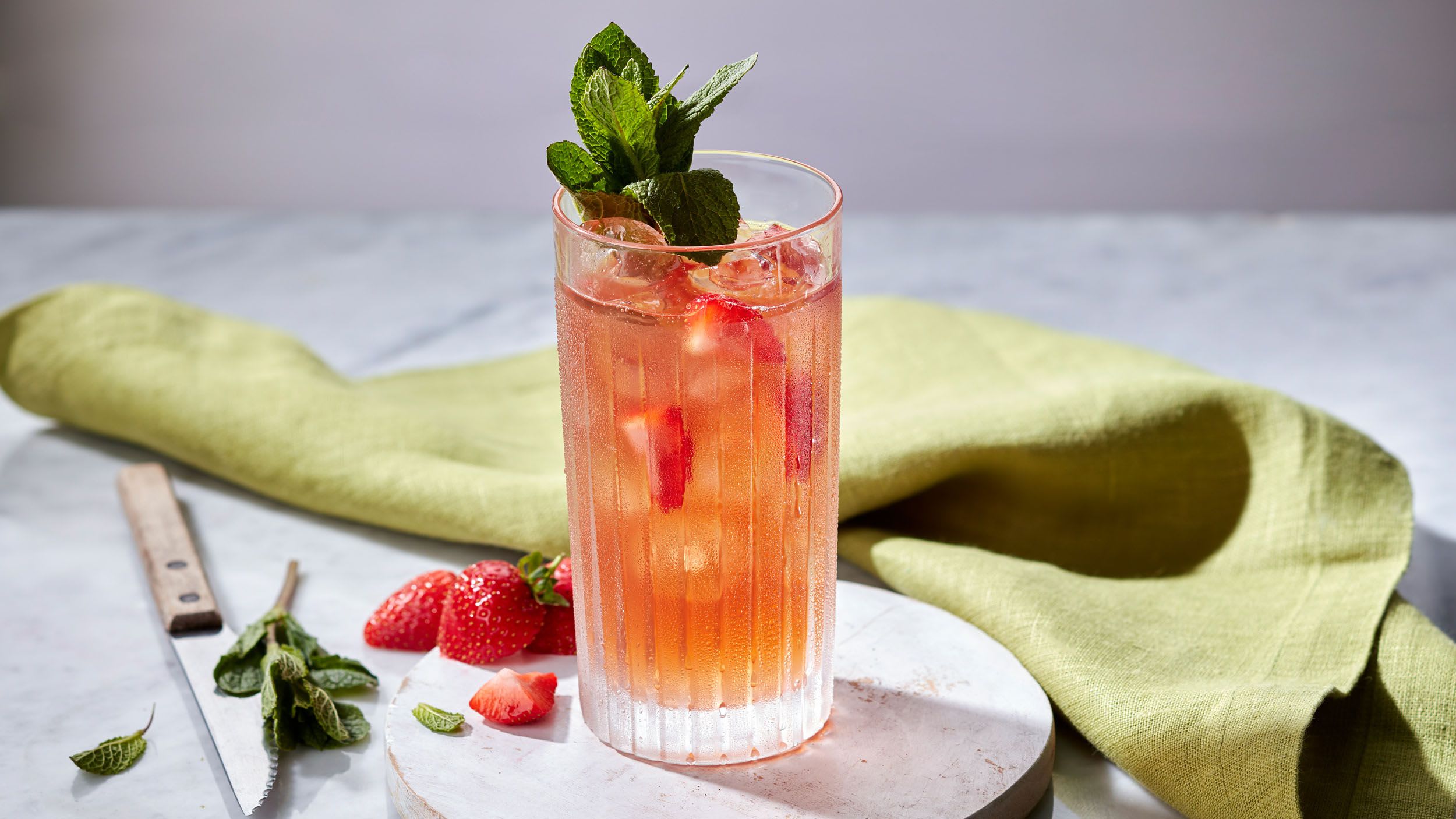A Pimm’s and lemonade is one of the most ubiquitous summer cocktails around.
Just as soon as that big yellow ball in the sky starts to heat up, the plastic pitchers in the back of the cupboard come to life as if they’re straight out of a Disney film. They wriggle their way to kitchen centrepiece and before you know it, you’ve shaken off the dust and loaded them up with ice and fruit. It’s simple to make too, and blessedly so, as you’ll need to make another one in five minutes…
Top tips:
If you add mint as a garnish, don’t poke in in as the aroma of the leaves that give the greatest impact.
Don't be shy with the Pimm's. It's a huge flavour, but it can still get drowned out and a 1 to 3 ratio is about as far as you want to stretch it to get the full impact.
If you’ve clasped your hands to your face in horror at the omission of cucumber, well… shove it in. It’s your Pimm’s to do what you want with, but we prefer a fruity summer cup. Cucumber delivers an unbeatable freshness, but it also has an incredibly firm grip and an insistence on taking over, showering everything with an air of vegetation.
In other controversy, yes – we always with Lemon Tonic and not lemonade, but that’s just personal too as we prefer it less sweet.


An abridged, inebriated history:
Pimm’s is a name that never gives up. Even alternative versions – those created by supermarkets or craft brands – will likely be referred to by the original brand name, rather than the lengthier summer cup, fruit cup or summer fruit cup names bestowed upon this fruit-salad-in-a-glass.
The original recipe was created in 1823 by James Pimm, the proprietor of an oyster bar in London, who created this gin-based liqueur as a digestive aid. The Pimm’s we know and love today became known as the “No.1 Cup,” (named for the tankard it was served in) with various others – 2, 3, 4 and 5 – made from different spirits.
By 1851, demand for the liqueur in other bars and restaurants meant that Pimm’s was moved to a large scale bottling production, becoming a brand somewhere along the way. James Pimm sold the business in 1865 and it went through many hands before landing in the lap of Diageo in 1997.
Pimm’s shows up at many, many events, from festivals to picnics to Wimbledon. The latter is probably one of the longest standing associations – when you think of Wimbledon, you think of Pimm’s. Surprisingly, the two have never been formally linked as headline partners, with both opting for traditional ties over overt commercial sponsorship.


